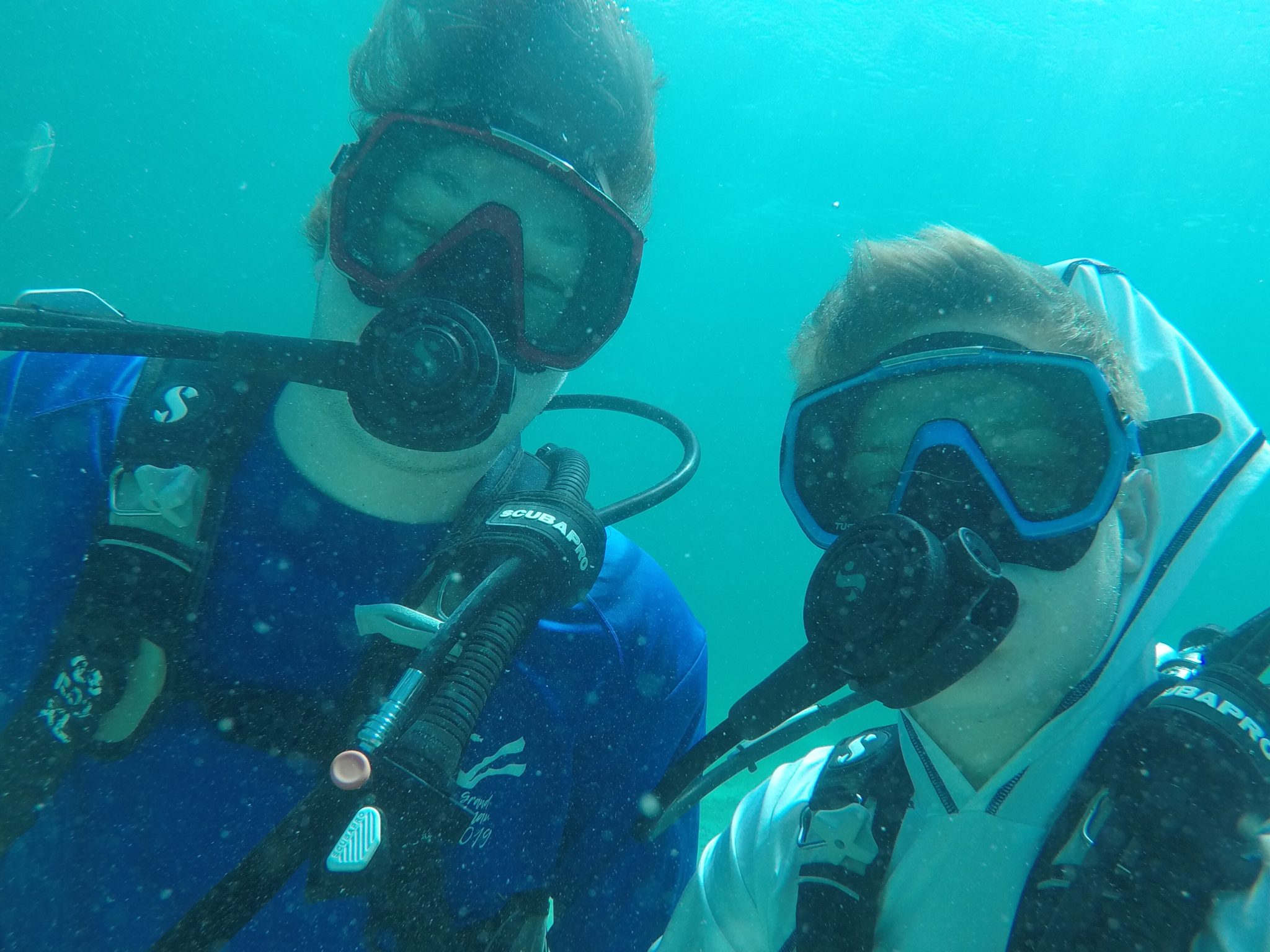This morning, I woke up to another wonderful breakfast consisting of eggs and bacon. The group and I prepared our dive gear for the trip to Hepp’s Pipeline. The name originated because of the wall shape. The formation of the wall heavily resembles that of a surfer wave pipeline. The curvature and growth of the mini wall rises and walls into a tunnel like formation. Within this tunnel, many types of corals house species of fish. Eels are common amongst the Pipeline because of the dark and eerie overhangs. These overhangs provide the darkness to hide and hunt for its prey. The under coral allows the eels to sneak and hide through the coral so it can be protected. The eel I saw was doing just that. The moray spotted eel was hard to spot due to the main skin being a black color, but the white dots allowed for the find. Continuing our dive, one buddy pair up ahead was able to spot a lion fish. This was the second encounter I have had this trip with a lion fish! The brownish tone that this particular lion fish exhibits helps hide it in plain sight by rocks.
Our next site was the Spanish Bay. The Spanish Bay has a very interesting background. Once upon time, there was a dive resort similar to the one here at Cobalt Coast. Hurricane Ivan struck the island, wiping out all of the resort. There was never restoration to the resort, but the name remained the same. Spanish Bay was the best dive I have experienced on this trip. My dive partner and I saw two more lion fish in the same crevice! We also spotted 5 different trumpet fish scattered amongst the coral. The trumpet fish swerved in and out of the sea fans and brain coral at such a fast pace. Before they started weaving in and out, we had to spot them. The trumpet fish slim and long body types allow them to camouflage within the corals and sea fans. Along with their thin bodies, the trumpet fish can change color to adapt to the fans and coral they are hiding in. Lastly, my buddy and I spotted a juvenile spotted drumfish! We were told on the Twin Sister that drum fish were common within the area, yet we had not seen on until right before we surfaced. Their black and white color way shined within the open ocean. That along with their wispy fins made them a super cool sight to see.
The last activity of the day was our adventure to Stingray City. Stingray City is a place set aside in the Grand Cayman for ecotouristic activity. This is the only place in the Caymans where people are permitted to touch the sea life. The stingray come the the city because of the food that they receive. Every boat is permitted one pound of squid everyday to allow feeding, but not over feeding from people.




